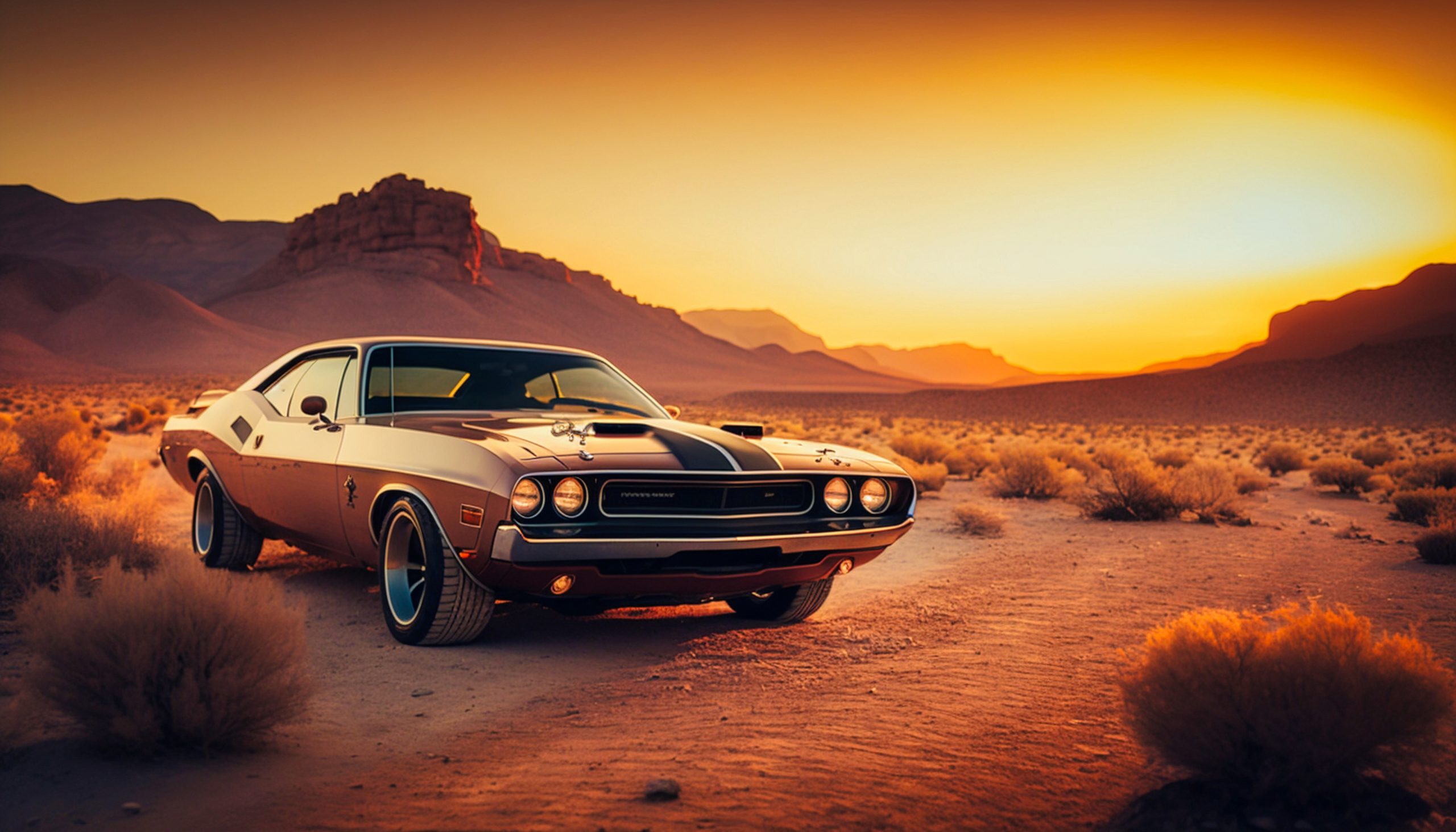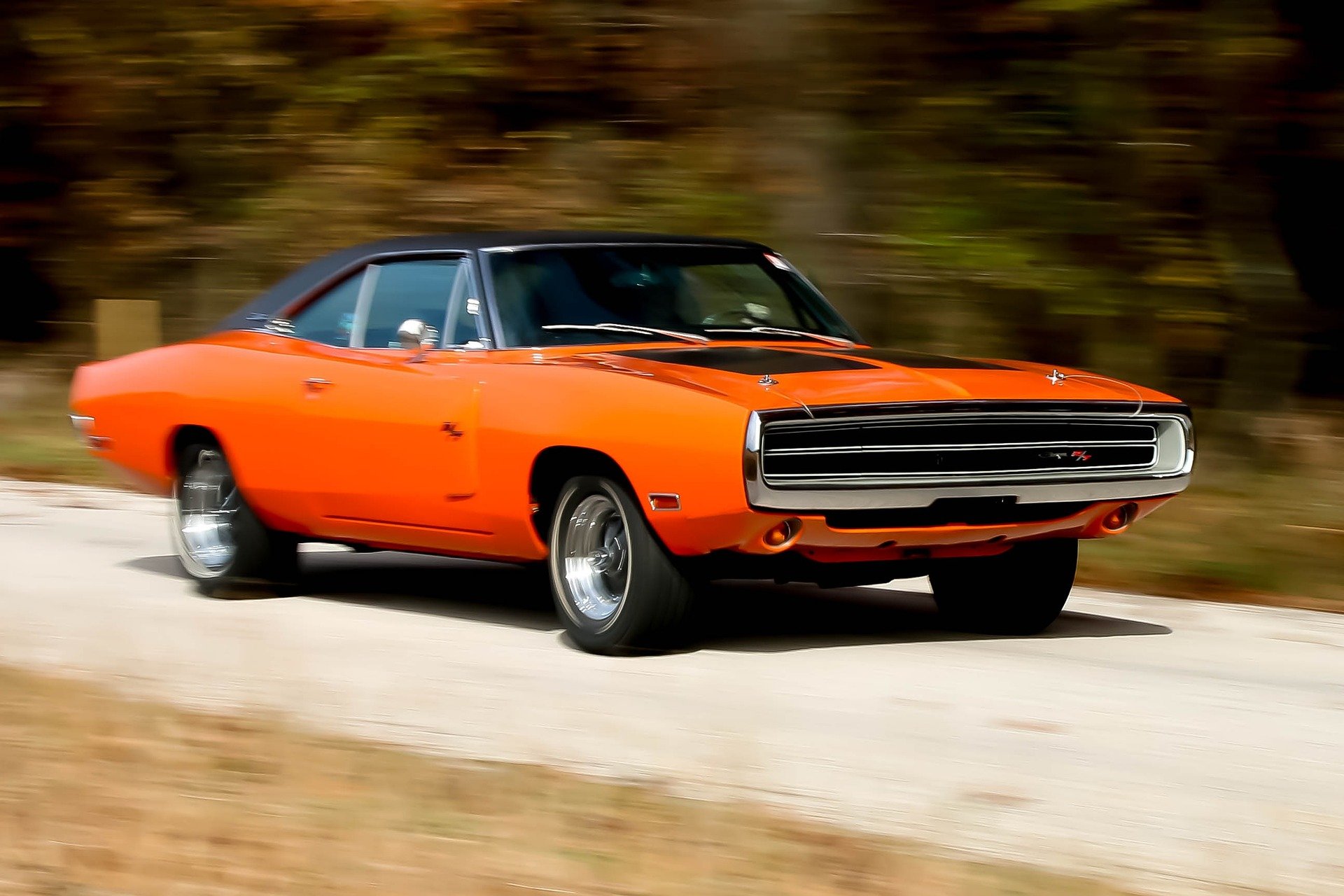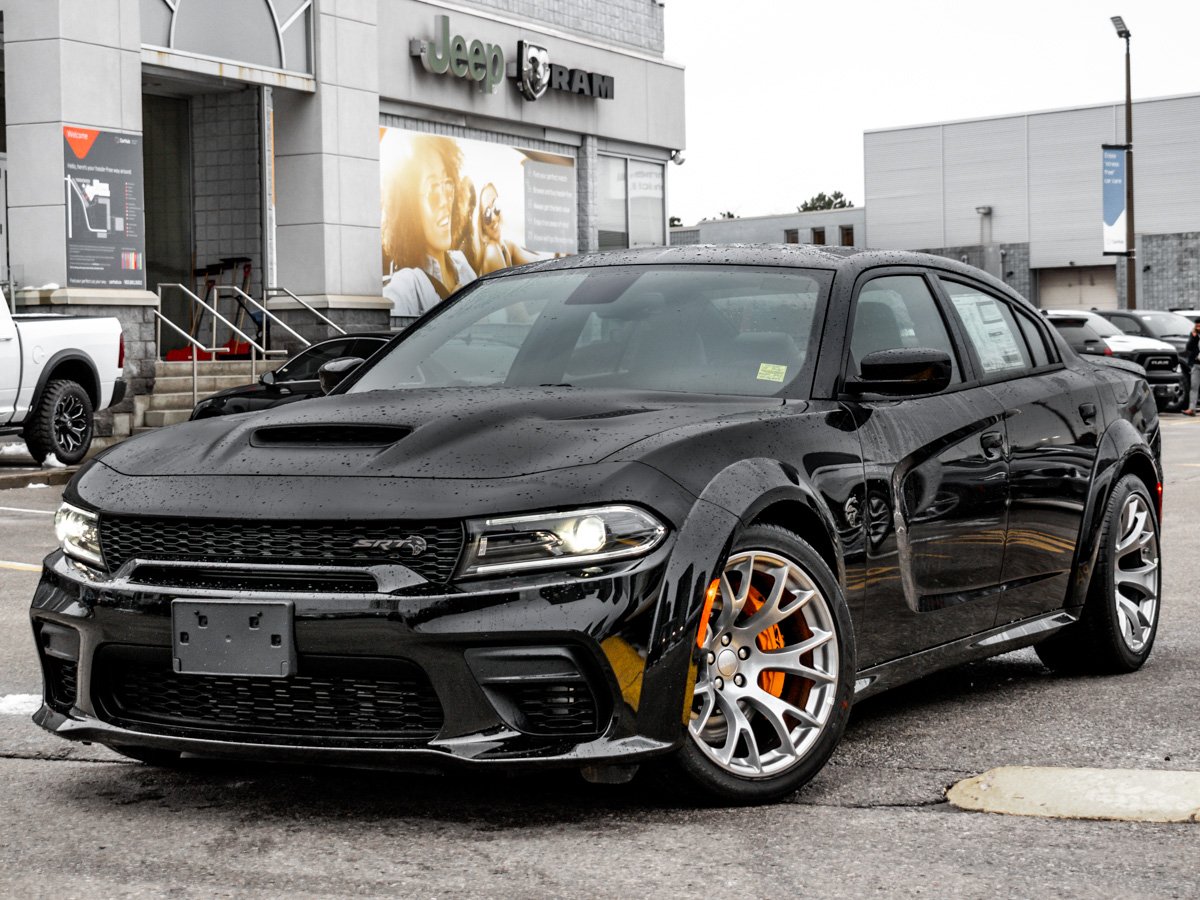What Is A Muscle Car?
Posted on June 2, 2023
Few vehicles embody freedom and big performance for not much money better than the muscle car. What began as an inexpensive way for younger motorists to ride in style has since become an icon of North American car culture. From the pony cars that started it all through the tire-annihilating street machines of the 1970s right up to today's great muscle missiles (looking at you Dodge Challenger and Charger), the muscle car has become a global automotive icon on par with beautiful Italian sports cars and JDM legends like the Nissan Skyline.
 1970 Dodge Challenger
1970 Dodge Challenger
What Is A Muscle Car?
Look up muscle cars in the dictionary (we did for this article) and you'll find a definition that reads: "any of a group of American-made 2-door sports coupes with powerful engines designed for high-performance driving." We’d argue that some of Mercedes-AMG's more unhinged offerings also fit into the category for their ability to put a huge grin on your face and leave thick number 11s in your wake. Muscle cars aren't about going round corners as fast as possible, but rather for looking, sounding, and making you feel you've got an avalanche of torque and horsepower under your right foot.
Muscle cars almost exclusively come with V8 engines, plenty of space and a more affordable price when compared to similarly powerful cars from around the world. The term "muscle car" was actually coined in the late 1970s, and has since evolved to include four-door vehicles like the Dodge Charger. The recipe is elegantly simple: big power, rear-wheel drive, blistering straight line pace. Classic examples of the muscle car recipe include the Chevrolet Chevelle SS, Dodge Charger R/T and the Pontiac GTO.
 1970 Dodge Charger R/T - Image from abedj from Pixabay
1970 Dodge Charger R/T - Image from abedj from Pixabay
History of the Muscle Car
These V8-powered freedom machines were born from the mantra "Win on Sunday, sell on Monday" and as such were based on the cars doing battle at dragstrips all over North America. Creature comforts were an afterthought to performance engines, brakes and suspension systems. The muscle car can trace its family history back to the cars used during the days of prohibition in the 1920s and 1930s. In order to outrun the law and get their moonshine to its buyers, bootleggers would modify their cars with larger, more powerful engines while maintaining a respectable body to fly under the police radar.
The First Muscle Car
Arguably the first of the muscle cars as we understand them today, Oldsmobile's Rocket 88 launched in 1949 with a lightweight body and a high-compression V8 motor proving to be the car to beat on the streets. A war of ever-larger motors and climbing horsepower figures between the major American manufacturers followed until the 1974 oil embargo and tightened emissions regulations called a temporary halt to the muscle car's evolution. Manufacturers continued to release cars inspired by the classic recipe throughout the 1980s and 1990s, but some of the fun was definitely lacking with vehicles throttled by lower octane gas and stringent emissions rules.
That all changed in the 2000s when improved technology once more unleashed big-power muscle cars on an enthusiastic public. 2008 saw the launch of the new Dodge Challenger with retro styling and V8 power that immediately produced images of huge, smoky burnouts and racing light to light on Woodward Avenue. The fun was back, and that was compounded in 2016 with the launch of the Dodge Challenger Hellcat packing a glorious 6.2-litre supercharged Hemi V8, 707 horsepower, 650 ft.-lb. of torque. 0-60 mph took just 3.6 seconds with the quarter-mile dispatched in 11.7 and all with a factory warranty! We live in amazing times.
 CarHub vehicle - 2023 Dodge Charger SRT Hellcat Widebody Jailbreak Edition
CarHub vehicle - 2023 Dodge Charger SRT Hellcat Widebody Jailbreak Edition
Modern Muscle
Examples of modern muscle cars include the Dodge Challenger, Dodge Charger, Ford Mustang and Chevrolet Camaro, though the latter two have spawned many circuit-focused performance sub-models that straddle the line between muscle and sports car. While still powered by V8 engines, cars like the Mustang Shelby GT350 and Camaro ZL1 1LE are highly specialized vehicles with price tags to match. The Dodge Charger and Challenger still faithfully carry the flag for big performance with a not-so-large cost of entry.
 CarHub vehicle - 2022 Dodge Challenger 392 RT Scat Pack Wide Body in Go Mango orange
CarHub vehicle - 2022 Dodge Challenger 392 RT Scat Pack Wide Body in Go Mango orange
Eye-Popping Paint
It's not just retro-inspired styling that give these modern-day muscle cars their links to the past, but also the colours of paint that adorn those chiselled bodies. Dodge has a special flair for eye-catching paint and excellent names for the stuff, bringing back classic shades like "Go Mango" orange (pictured above), "Plum Crazy" purple, "Top Banana" yellow, "Sublime" green and the gorgeous "B5 Blue" shown on this Dodge Charger Daytona R/T which recently left the CarHub showroom on its way to a speed-loving home.
 CarHub vehicle - 2022 Charger RT Daytona
CarHub vehicle - 2022 Charger RT Daytona
What Does Mopar Mean In Muscle Cars?
The Mopar brand was launched by Chrysler way back in 1937 with its first product being the newly invented antifreeze and takes its name from a mashup of the words "motor" and "parts." To enthusiasts, the Mopar name can be used to refer to any vehicle from the original Chrysler brands such as Plymouth, Dodge, Ram, Chrysler and Jeep or AMC after they joined the Chrysler portfolio. Today, Mopar makes a wide range of performance and aftermarket parts for new and old vehicles from these brands, many of which are geared to upgrades for its muscle cars.
Are Muscle Cars Reliable?
Due to their simplicity compared to modern cars, classic muscle cars are relatively reliable as long as you take care of them. Classic cars usually require more maintenance than old ones, so if you're looking for convenience you may be better off with a modern muscle car as they deliver all the comfort and reliability we've come to expect plus the ability to rocket off towards the horizon at a moment's notice. If you do need to find replacement parts for your classic ride there's an enormous aftermarket industry dedicated to keeping these cars thundering down dragstrips for years to come with many companies producing classic parts using modern metals and techniques.
What's The Rarest Muscle Car?
This one's always going to be controversial but for us it's the Shelby Cobra "Super Snake." Built by Carroll Shelby in 1965 the Super Snake added not one but two Paxton superchargers to the Cobra's 500 horsepower big block V8 for a total of 800 tire shredding horsepower. A pair of Super Snakes were built with Shelby keeping one of them for himself. The other was sold and immediately returned after the buyer scared himself silly driving it, then killed its second owner when he lost control and ended up in a lake. Shelby used the remaining Super Snake as a publicity tool for his racing business, and was clocked at speeds in excess of 190 MPH in it during a Nevada road race. With 800 horsepower and zero driver assists. If that ain't the spirit of the muscle car we don't know what is.
CarHub has a range of muscle and performance cars to satisfy all your tire-smoking needs. Click here to see our current available inventory of muscle cars or reach out to us at CarHub.ca/contact to let our dedicated and knowledgeable Product Advisors help you find your perfect muscle car. Find your perfect car your way with CarHub.ca.
-Author Bio-
James Walker is a car nut and motoring writer with a love of all cars fast and slow. He drives a lot and has been writing about cars for over five years.

